SUMMARY
This is AI generated summarization, which may have errors. For context, always refer to the full article.
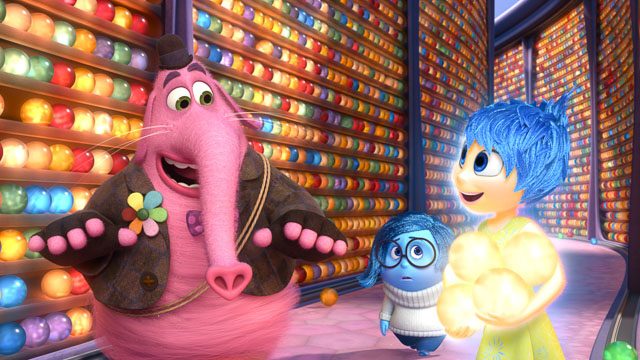
It is the perfect companion piece to Pete Docter and Ronnie del Carmen’s Inside Out because the short’s delights are easily collapsible into two emotions, joy and sadness. The short breezily traverses the spectrum from sadness to joy, depicting the volcano being consumed by defeat and hopelessness before rewarding him with cheerful affection. It grants the short a shimmer of sincerity in its effort in portraying happiness, considering that it doesn’t shy away from touching the bleak depths of defeat.
Dissecting Pixar
This is Pixar’s forte. It is its indisputable formula. Throughout the years, the well-regarded animation studio has been churning out films that follow the familiar emotional journey from sadness to joy through unique landscapes.
The Toy Story movies (1995-2010) capture the palpable pains of toys being forgotten by virtue of adulthood before taking pleasure in the genuine bliss of childhood.
Wall-E (2008) depicts a post-apocalyptic world where the Earth is devoid of life only to center on the struggles of a robot to find love. Cars (2006) nostalgically daydreams of a world prior to inevitable progress, while fully surrendering to the amusing silliness of the conceit of talking cars. Finding Nemo (2003) similarly has a tragic separation between father and son resulting in a jubilant reunion.
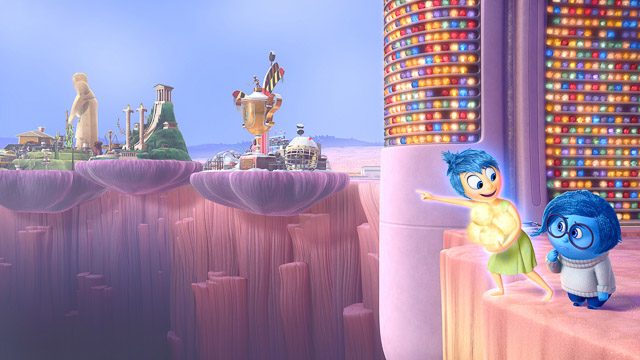
Inside Out turns the primary emotions of a Pixar film into characters struggling to take control over the disposition of a prepubescent girl. Joy (Amy Poehler) has existed inside Riley’s head since the day Riley was born. As Riley grows older, Joy is joined by emotions, including Sadness (Phyllis Smith), Fear (Bill Hader), Disgust (Mindy Kaling), and Anger (Lewis Black).
Notwithstanding the additions in the crew inside Riley’s head, Joy has always been on top, efficiently managing Riley to be the perfectly jovial kid with abundant happy memories. However, Riley’s emotional balance suddenly becomes threatened when Sadness starts infecting Riley’s memories with melancholy, which coincides with Riley’s move from familiar Minnesota to daunting San Francisco.
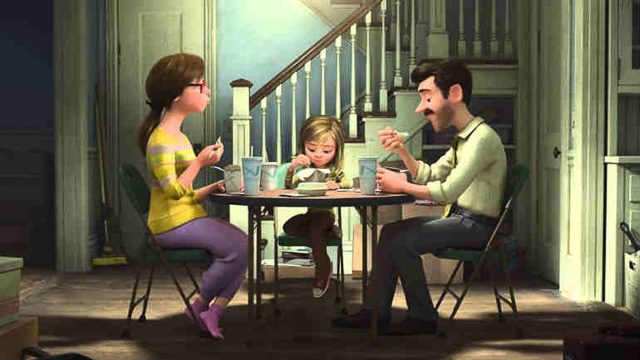
More than a novelty
The biggest danger of Inside Out’s innovative take on depicting emotions as characters with motivations that are independent of the person they belong to is that, there is an immense temptation to stay at being a cute novelty. Thankfully, Docter and Del Carmen have molded a story that is as grounded on a universal reality as it is imaginatively fantastic.
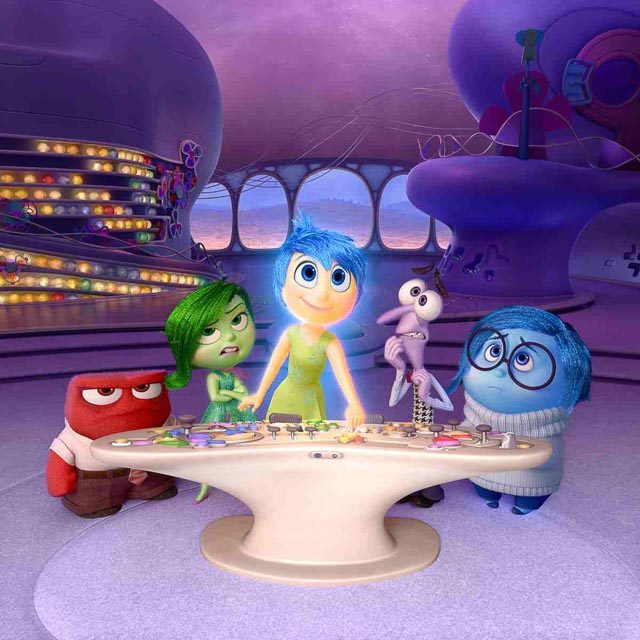
Riley’s story is both prosaic and intimate. It dwells on the inevitability of change, of being plucked from the comforts of familiarity and into the unknown. Its emotional resonance hinges on the delicate connections that children have with their family and distant memories. It has the same punch as a well-told coming-of-age film, balancing the tender aches of growing up with the simple everyday pleasures of simply living.
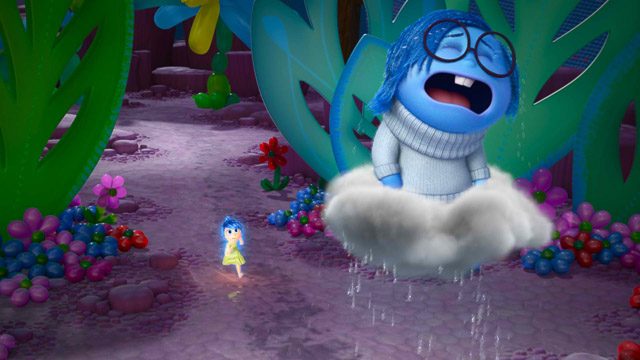
On the other hand, the journey of Joy and Sadness within the labyrinth that is Riley’s mind is more akin to an adventure, where Docter and Del Carmon flex their muscles in reimagining the workings of the mind as a place where characters traverse. The design is noteworthy, considering that everything seems logical from the perspective of basic psychology.
Pixar’s hierarchy of emotions
If there is one thing that Inside Out reveals about Pixar, it is its preference of which emotions to stir in its audience. The film has Joy and Sadness as protagonists, with the rest of the personified emotions serving as humorous distractions. It is all understandable. The film is aiming for the same bittersweet effect as almost all of Pixar’s films.
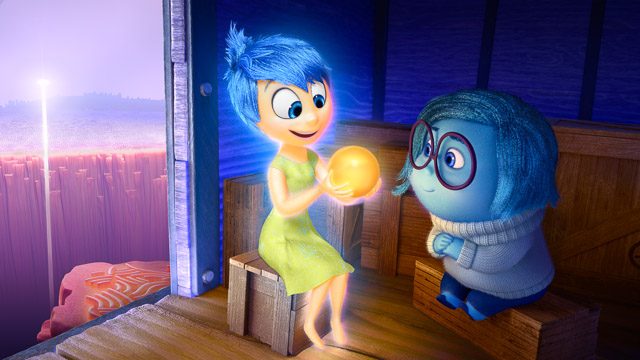
This is what separates Pixar from Studio Ghibli, whose animated features touch on a fuller spectrum of human emotions resulting in experiences that go beyond the immediate bliss of a well-earned happy ending.
Despite its spunk and innovation, Inside Out still stubbornly sits inside the comfort zone of Pixar. It avoids exploring the darker workings of the mind, those crevices where joy and sadness are but rudimentary ornaments.
Inside Out isn’t a trailblazer. It is only a triumphant repeat of themes and feelings we’ve all experienced before from previous Pixar flicks. Nevertheless, the film more than meets expectations. It never feels old or repetitive, simply because there is nothing more satisfying than a sincere smile after a stream of sobs. – Rappler.com
 Francis Joseph Cruz litigates for a living and writes about cinema for fun. The first Filipino movie he saw in the theaters was Carlo J. Caparas’ ‘Tirad Pass.’ Since then, he’s been on a mission to find better memories with Philippine cinema. Profile photo by Fatcat Studios.
Francis Joseph Cruz litigates for a living and writes about cinema for fun. The first Filipino movie he saw in the theaters was Carlo J. Caparas’ ‘Tirad Pass.’ Since then, he’s been on a mission to find better memories with Philippine cinema. Profile photo by Fatcat Studios.
More Inside Out:
- WATCH: ‘Pixnoy’ Ronnie del Carmen shares advice for Pinoy creatives
- WATCH: Pinoy ‘Inside Out’ co-director Ronnie del Carmen draws surprise for Pixar fans
- Meet Pixar’s Ronnie del Carmen, co-director of ‘Inside Out’
- WATCH: ‘Inside Out’ directors Pete Docter, Ronnie del Carmen on mind-blowing Pixar fan theory
- WATCH: Pinoy ‘Inside Out’ co-director Ronnie del Carmen draws surprise for Pixar fans
- WATCH: How to draw Anger from ‘Inside Out’
Add a comment
How does this make you feel?
There are no comments yet. Add your comment to start the conversation.